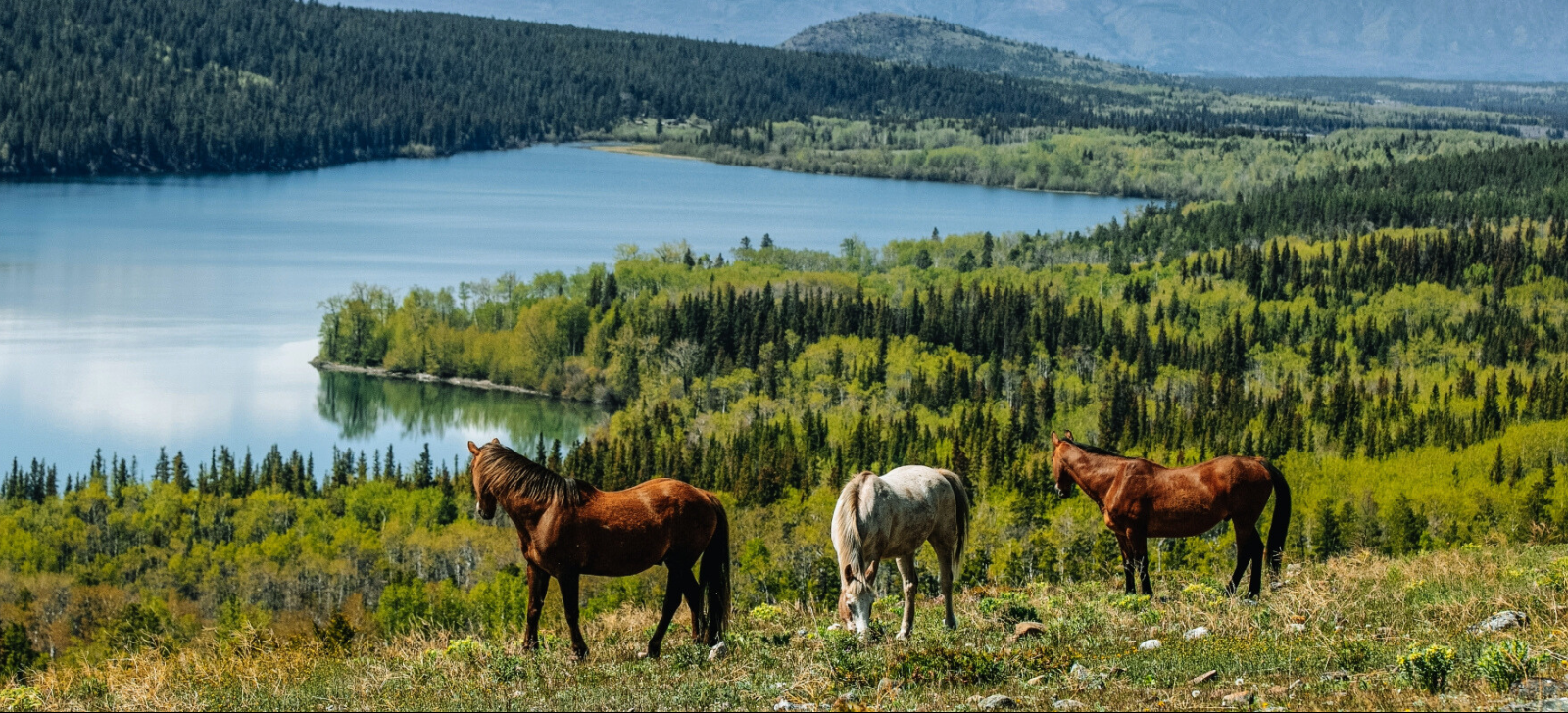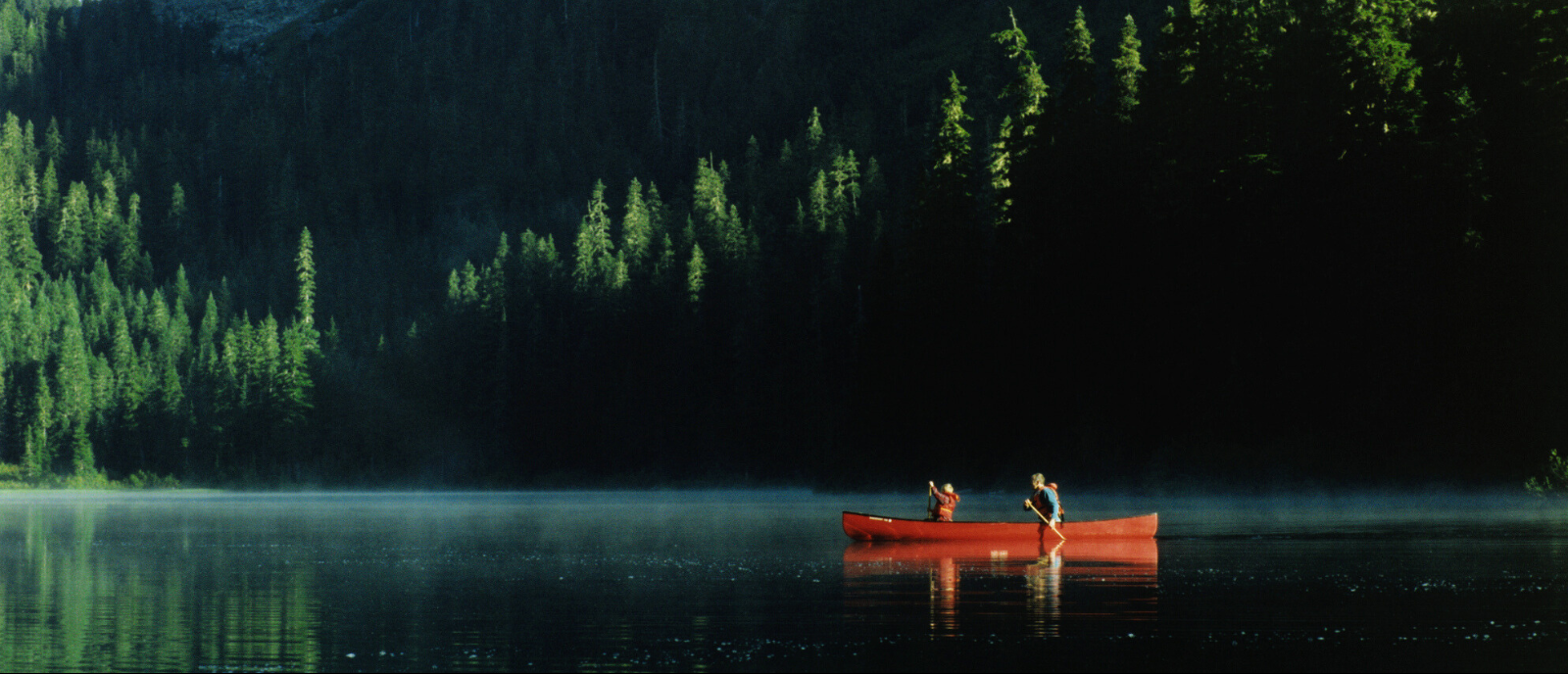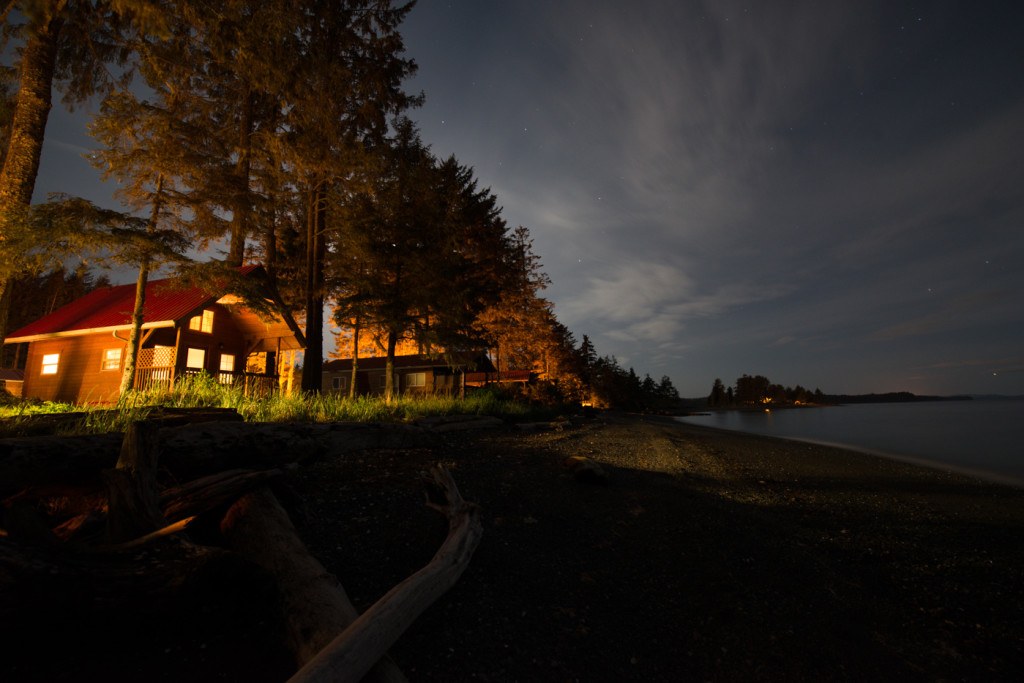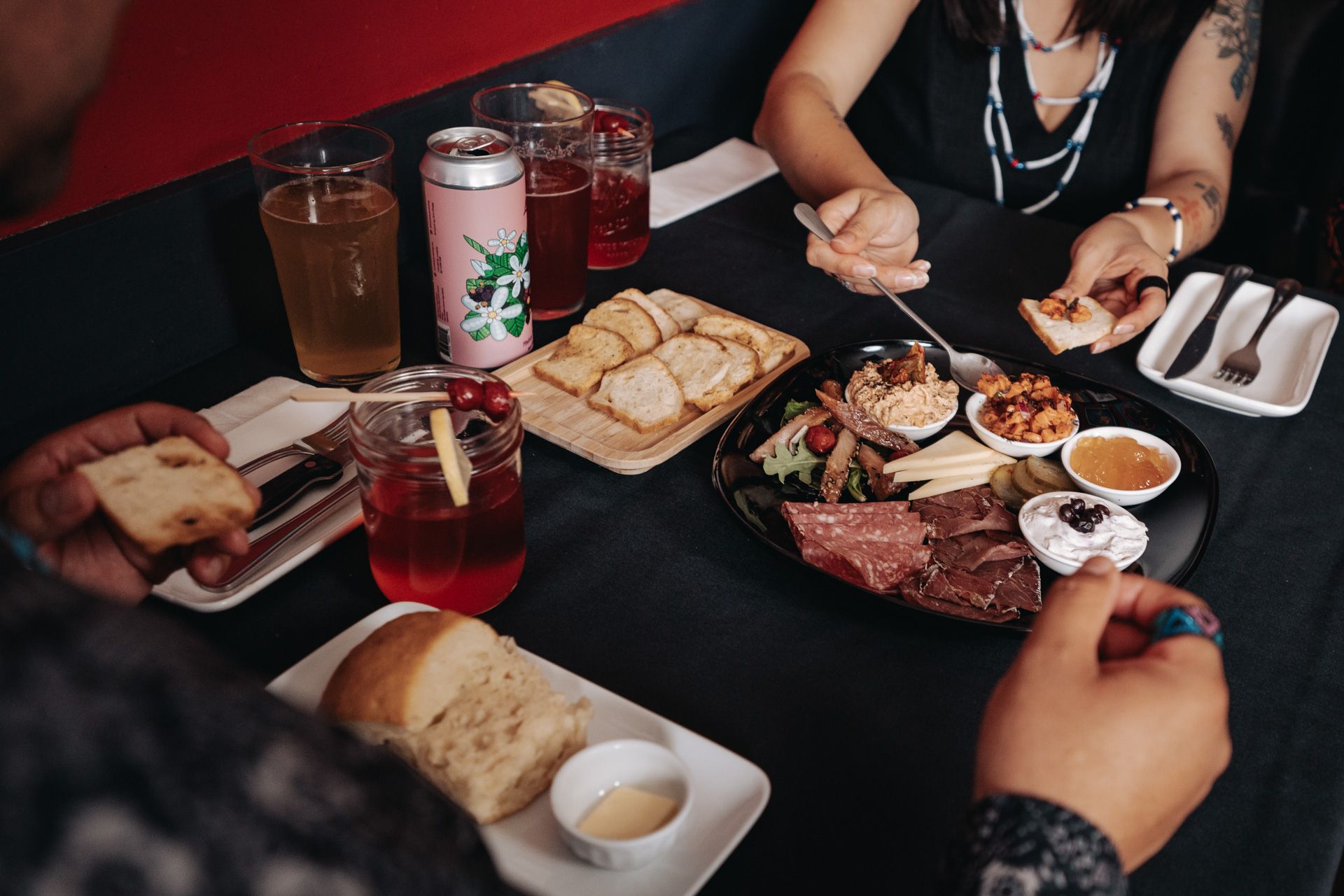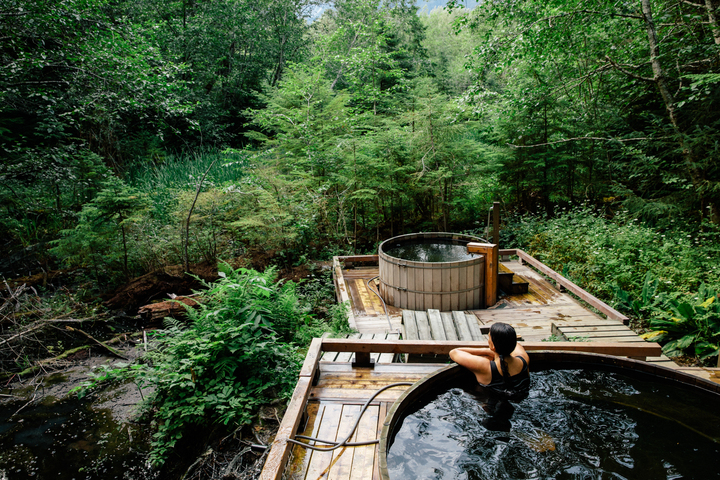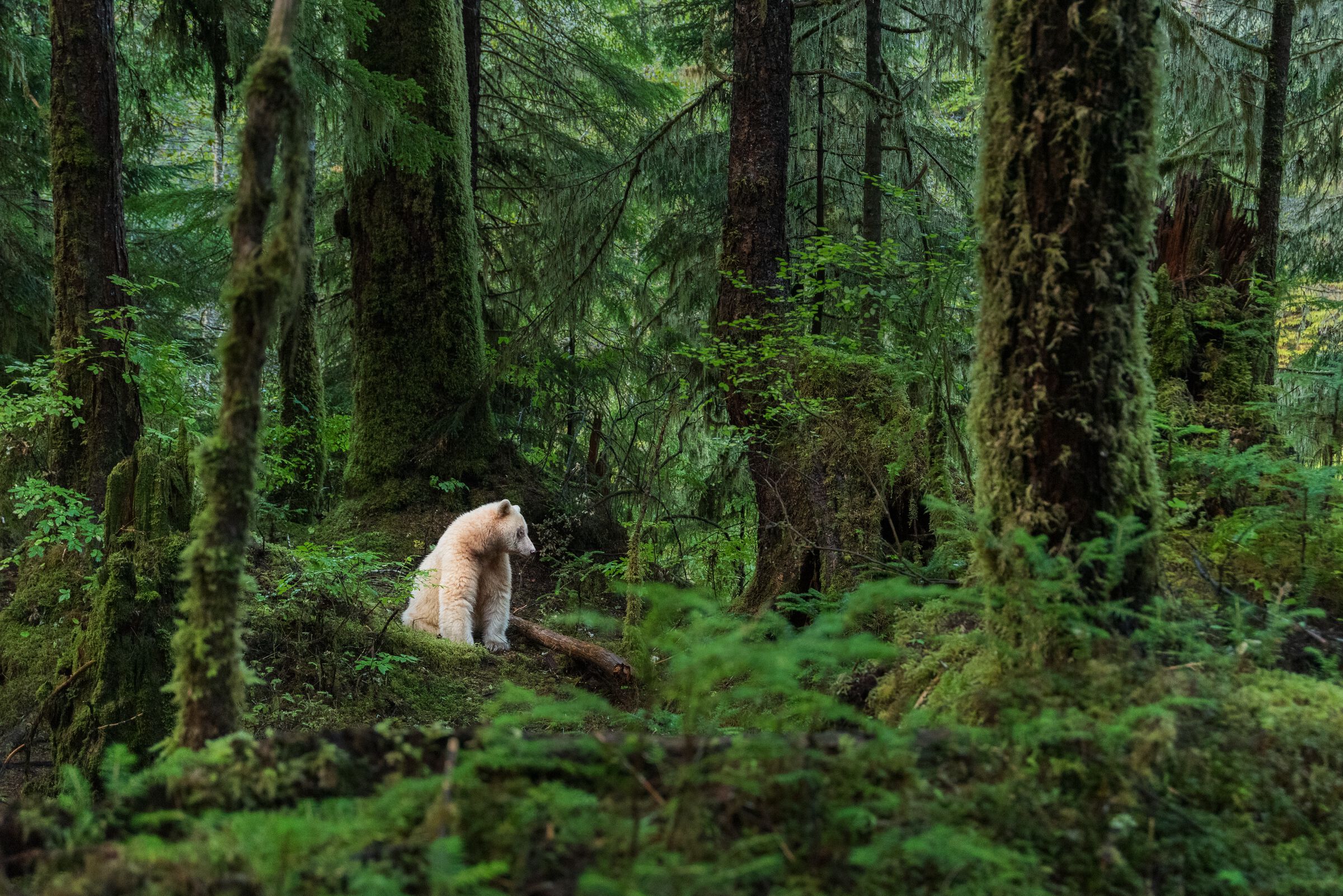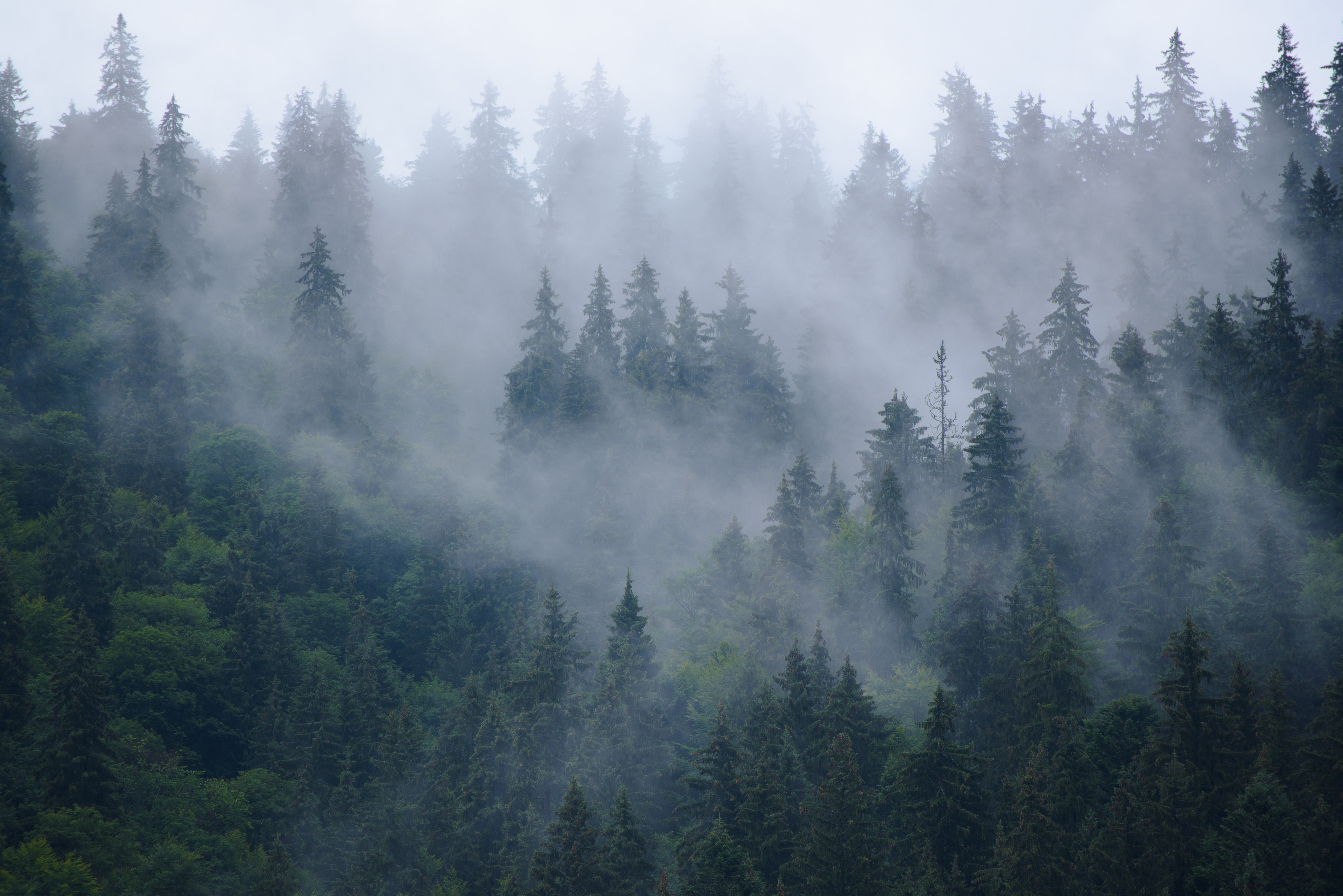
Explore these facts about the Great Bear Rainforest, its key species, and the Indigenous communities and allies working together to preserve one of the largest temperate rainforests remaining in the world–a sublime and protected ecological wonder you can visit!
Venture into a realm where thousand-year-old trees stand tall, unique plants and animals inhabit the lands and waters, and salmon feed the trees. The Great Bear Rainforest is home to living glass sponge reefs thought to be extinct, a recovering population of humpback whales, and more than 6 million migratory birds.
 Spirit Bear Lodge / Jack Plant
Spirit Bear Lodge / Jack Plant  Nuxalk Nation, Thorsen Creek, Great Bear Rainforest
Nuxalk Nation, Thorsen Creek, Great Bear Rainforest Endangered Species, Human Spirit
It is not a contrived conservation area but a meaningful menagerie of real life and wonder. Its protection preserves endangered species and the human spirit–a testament to beauty, wonder, and the good that comes when we share values and work together.
Secret Rainforest: Access Granted
Located on the Central and North Coasts of British Columbia and nearby islands, this vast network of deep and lesser valleys, crystal clear lakes and streams, and fjords and inlets hosts the densest terrestrial biomass and most diverse arrays of plant and animal life on Earth. Accessing this expansive, protected area isn’t simple, but that’s part of its allure.
Elusive and Uncommon
Most visitors to the Great Bear Rainforest hope to make the moonshot and catch a glimpse of the elusive and uncommon Spirit Bear, also known as Kermode Bear. For your best chance at a successful sighting, plan with local Indigenous tour operators who know where and when to find them–primarily in Kitasoo Xai’xais Traditional Territory and especially on Princess Royal Island and Gribbell Island, just north of Klemtu.
 Destination British Columbia
Destination British Columbia  Coastal Rainforest Safaris
Coastal Rainforest Safaris In The Rainforest
Bring a raincoat, shorts, thermal layers, a sun hat, and warm gloves–the weather can change quickly in the area, and visitors should pack for all seasons at any time of the year.
15,000,000+ Acres in Size
The Great Bear Rainforest is the largest remaining coastal temperate rainforest on the planet–almost as big as Ireland and larger than Switzerland.
The Great Bear Rainforest includes offshore islands from the Discovery Islands to the Alaskan border in the north. Vancouver Island and Haida Gwaii are not part of the GBR, which reaches from Stewart in the north to Prince Rupert in the South. The area includes most of Douglas Channel, half of Hawkesbury Island, and part of Gardner Canal.
The region includes the coastline to the west and south of the Fiordland Conservancy, Kitlope Heritage Conservancy Protected Area, Tweedsmuir North and Tweedsmuir South Provincial Parks, including Dean Channel, Burke Channel, Rivers Inlet, and the communities of Bella Bella, Bella Coola, and Hagensborg. In the south, both Knight Inlet and Bute Inlet are included.
2,500 mm
The minimum annual precipitation required for an ecosystem to qualify as a rainforest.
The Great Bear Rainforest receives a whopping average of 6,650 mm of rainfall annually, making it one of the rainiest areas in North America. The area also experiences some of the strongest tides in the world, and its proximity to the Queen Charlotte faultline makes earthquakes and tsunamis possible.
 Spirit Bear Lodge / Jack Plant
Spirit Bear Lodge / Jack Plant  Sea Wolf Adventures
Sea Wolf Adventures First Nations Forever
With skills and practices based on careful scientific observation spanning millennia, First Nations continue to thrive and lead the way in modern decision-making regarding local marine economy and ecology.
13,000+
Age in years of Indigenous settlements in the Great Bear Rainforest.
The area contains cultural and burial sites belonging to many Coastal First Nations whose livelihoods have been sustained for millennia by stacking learning on the land and water across generations.
26
First Nations share decision-making with the BC government and legal requirements to maintain areas of cultural, economic, and ecological importance to local Indigenous communities.
The collaboration of these Coastal First Nations communities, their allies, and the government has led to incredible achievements in environmental protection for the Great Bear Rainforest.
10%
Percentage of Klemtu community employed by Spirit Bear Lodge

SPIRIT BEARS
This genetic mutation is your sign to be grateful today for the lush bounty of the land.
“The creator Raven wanted to remind the Kitasoo Xai’xais Peoples of a time when this land was covered in ice, so he decided to turn one in ten black bears white. The white bear reminds us to be thankful for the lush and bountiful land of today.”
50-150
The remaining number of Spirit Bears, as estimated by the Kitasoo Xai’xais.
Also known as kermode bears or moksgm’ol, most remaining Spirit Bears, a cream-coloured subspecies of black bears found only in Canada, are found in Kitasoo Xai’xais Traditional Territory.
It is important to note that these bears are not albino but brown bears with a genetic mutation in the MC1R gene. The mutation is sometimes passed to cubs.
55 km
The speed per hour Spirit Bears can run.
Not only can they run faster than you, but they eat almost anything–that’s why it’s important to explore with an experienced local Indigenous guide. These omnivores eat roots, bulbs, grasses, fruit, insects, young deer, the chance carcass, and anything else they can get their paws on! Of course, their food of choice is a keystone species of the Great Bear Rainforest–the salmon.
Light-furred bears are thought to have a daytime fishing advantage, with their cream fur making it more difficult for salmon to see them. Spirit Bears often take their catch into the forest to eat, bringing their tree friends their leftovers.
50%
Number of guests at Spirit Bear Lodge lucky enough to catch the secretive, usually solo, Spirit Bear.
Remember–Spirit Bears only live in particular areas in the massive Great Bear Rainforest. Not everyone gets to see one! Booking a dedicated tour with an experienced Indigenous host is your best chance to see the famous cream-coloured bear.
 Knight Inlet Lodge
Knight Inlet Lodge  Destination BC / Sean Scott
Destination BC / Sean Scott 25 Years
Is the average life span of a female grizzly bear.
Lewis and Clark, famous for their two-year military exploration of western North America, were the first to describe the bear as grisly, interpreted as either with white-tipped hair or fear-inspiring. Its Latin name, Ursus arctos horribilis, roughly translates to horrible bear.
Often considered a family member by Coastal First Nations, the grizzly bear has earned a dangerous reputation that encourages people to enter their sanctuaries with fear, reverence, and humility, which helps to safeguard the species, including protective sows and their new cubs.
1-3
Grizzly cubs in a mama’s den.
While grizzlies have a reputation for horrible fearsomeness, they are born entirely defenseless, without hair or teeth. These bald, gummy bears stay safely in dens made from existing holes at tree bases or carved out under the tree’s root system, nursing for five months while they grow fur and teeth.
Grizzly cubs are born the smallest of all mammals compared to their full-grown size. Half of all babies born survive their environmental challenges and grow to the age of reproduction.
2-3
Years grizzly cubs spend learning by their mother’s side before they go off on their own.
After five months of nursing from their mother, the bears are ready to eat a more mature diet–but not yet ready to hunt and forage for themselves. At this point, the mother bear stops milk production on some of her teats to ensure she has the energy to retrieve other foods to meet the dietary needs of her growing cubs.
Their environment is filled with hungry animals, including wolves and other bears. Though they leave the den, they stay close to their mother’s safety as she gathers food for her growing children.
8
Number of times a grizzly’s heart beats per minute during hibernation.
A bear’s heart rate drops significantly during its 5-8-month-long annual hibernation. An adult bear draws only one breath per minute during this time and does not eat, drink, or produce waste.
They survive off fat stores, and the kidneys process urea, a part of urine, into protein that feeds the muscles and organs that allow the bear to emerge healthy.

In defense of wonder since time before memory
Stewardship
The Great Bear Rainforest, one of the largest remaining temperate rainforests worldwide, is a remarkable and protected ecological wonder in British Columbia–and you can go there!
Now almost completely protected from logging, local Indigenous cultures and their allies have succeeded in preserving the biodiversity of this global treasure. Visitors are welcome to respectfully witness and support stewardship of the dazzling abundance that has sustained local life, including Indigenous communities, since before memory.
2017
Grizzly bear hunt banned in British Columbia.
85%
Percentage of the Great Bear Rainforest now protected from industrial logging. The remaining 15% is subject to the toughest logging regulations in North America.
$335,000,000
Contributions made by provincial and federal governments and private philanthropists in June 2024 as part of an ongoing endowment fund to expand protection for marine ecosystems off the coast of the Great Bear Rainforest.
 Spirit Bear Lodge
Spirit Bear Lodge Stays and Experiences
Here are some of the Indigenous tourism operators available to support cultural learning, safety, and stewardship on your trip to the Great Bear Rainforest:
Spirit Bear Lodge
Klemtu, British Columbia
Spirit Bear Viewing | Eco Tours | Cultural Tours | Bear Viewing | Wildlife Tours
In the heart of The Great Bear Rainforest, Spirit Bear Lodge offers exclusive access to transformative wilderness and authentic cultural experiences in Kitasoo Xai’xais traditional territory. The multi-day packages allow guests to immerse themselves in an ancient culture and reconnect with nature.
 Coastal Rainforest Safaris
Coastal Rainforest Safaris Coastal Rainforest Safaris
Port Hardy, British Columbia
Bear Viewing | Whale Watching | Wildlife Tours
Departing from Port Hardy, Vancouver Island, Coastal Rainforest Safaris offers wilderness experiences in the Great Bear Rainforest, the culturally rich territories of the Kwakwaka’wakw people. The immersive tours explore connections between land and sea, sharing stories from Indigenous perspectives.
 Copper Sun Gallery and Journeys
Copper Sun Gallery and Journeys Copper Sun Gallery & Journeys
Bella Coola, British Columbia
Eco Tours | Cultural Tours | Wildlife Tours | River Rafting
Copper Sun Gallery & Journeys offers authentic Nuxalk artwork and outdoor cultural tours in Bella Coola, BC. Enjoy handcrafted artwork before journeying through the Great Bear Rainforest, taking in Nuxalkmc stories, dramatic scenery, and wildlife on the petroglyphs, river rafting, or walking tours.

YuWala Marine Charters
Bella Bella, British Columbia
Marine Transporation | Eco Tours | Cultural Tours
YuWala Marine Charters provides marine transportation between coastal communities, water taxi services, and charter services for any occasion. Transport your film, dive, or research crew and gear safely. YuWala offers wildlife viewing, natural history, historical interpretation, cultural sharing, and storytelling tours with Heiltsuk guides for up to 56 passengers.
 Shearwater Resort
Shearwater Resort Shearwater Resort
Denny Island, British Columbia
Accommodations | Eco Tours | Cultural Tours | Wildlife Viewing | Fishing
Owned and operated by Heiltsuk Nation, Shearwater offers marine-based cultural journeys through Heiltsuk Territory, exploring the coastline, its history, and the living and breathing culture sheltered by the canopies of the rain-cloaked forests. The resort also offers fishing packages, including 10 hours of fully guided fishing per full day, hearty West Coast-style prepared meals, bait, fuel, tackle, filleting, and vacuum packing and flash freezing of your catch. Accommodations are available, and there is a restaurant onsite.
 Sea Wolf Adventures
Sea Wolf Adventures Sea Wolf Adventures
Port McNeill, British Columbia
Cultural Tours | Wildlife Viewing
Explore grizzly bear sightings, wildlife viewing, and cultural tours with Sea Wolf Adventures in the Broughton Archipelago and the Great Bear Rainforest (Musgamakw Dzawada’enuxw Territory). Indigenous guides deliver authentic, educational journeys with insight into the heritage of Kwakwaka’wakw Nation.
 Knight Inlet Lodge
Knight Inlet Lodge Knight Inlet Lodge
Port McNeill, British Columbia
Accommodations | Wildlife Viewing
Knight Inlet Lodge is an Indigenous-owned wildlife viewing destination in the Great Bear Rainforest. The resort offers grizzly bear experiences in one of the last intact temperate rainforests–home to Indigenous Peoples, ancient forests, and bears since time immemorial. The five partner First Nations who now own the Lodge – Da’naxda’xw Awaetlala, Mamalilikulla, Tlowitsis, Wei Wai Kum and K’ómoks – have been stewards of their traditional territories, including the region of Knight Inlet, for thousands of years.
